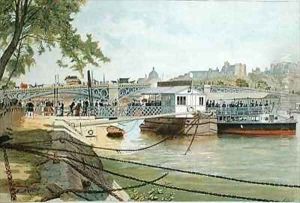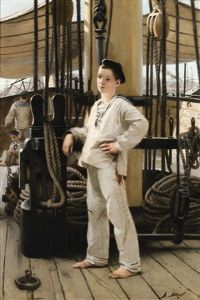Alexandre Brun Paintings
Alexandre Brun was a French artist known primarily for his work as a painter, who was born on February 15, 1853, in Marseille, France, and died on January 30, 1941, in the same city. His artistic journey began in his hometown, where he was initially educated before moving to Paris to further his studies.
In Paris, Brun became a student at the Ecole des Beaux-Arts, where he trained under renowned artists such as Jean-Léon Gérôme, a prominent painter and sculptor of the time, known for his work in the academicism style. Alexandre Brun's training in this environment would have been rigorous and steeped in the academic tradition, which emphasized drawing, attention to detail, and adherence to classical themes and techniques.
Throughout his career, Brun exhibited his works at various salons and exhibitions, a common practice for artists of his time to gain recognition and sell their work. His style was characterized by its academic roots, often portraying historical and mythological subjects, as well as landscapes and seascapes, reflecting his Mediterranean origins.
Although not widely known as a leading figure in art history, Brun contributed to the cultural tapestry of his era. His works may be found in some regional French museums and private collections. The period during which Alexandre Brun worked was one of great transition in the art world, with the rise of impressionism and post-impressionism challenging the academic norms that he had been trained in. Despite this, he remained committed to his style, leaving behind a body of work that reflects the academic traditions of the 19th century.
Brun's death in 1941 marked the end of a long life that spanned significant changes in the art world, from the dominance of academic art to the emergence of modernism. His works remain as a testament to the skills and techniques that were prized during his formative years as a painter.

